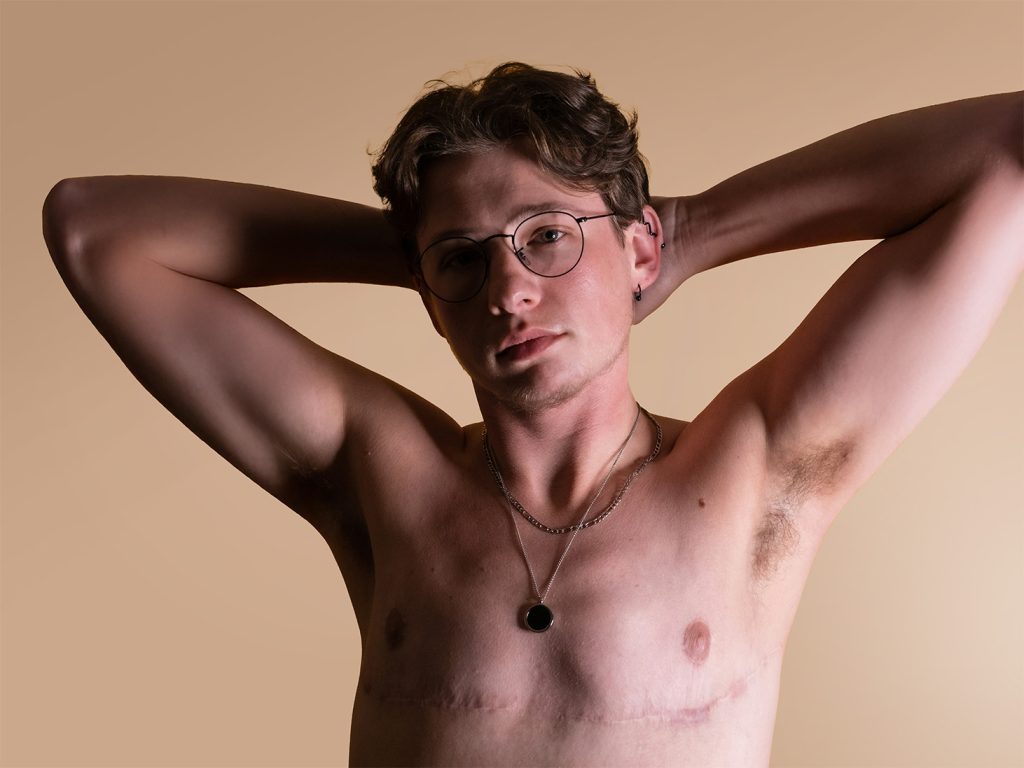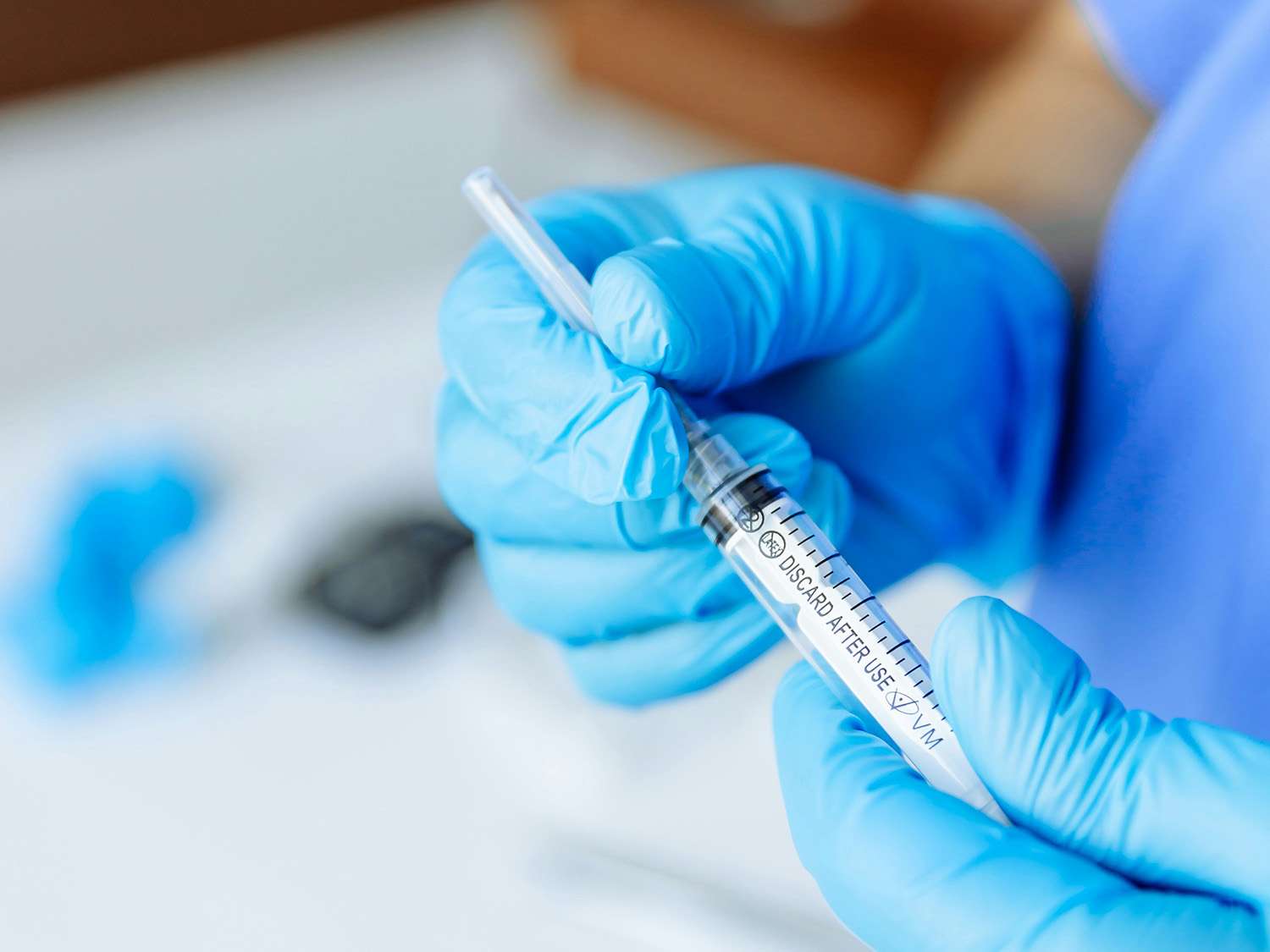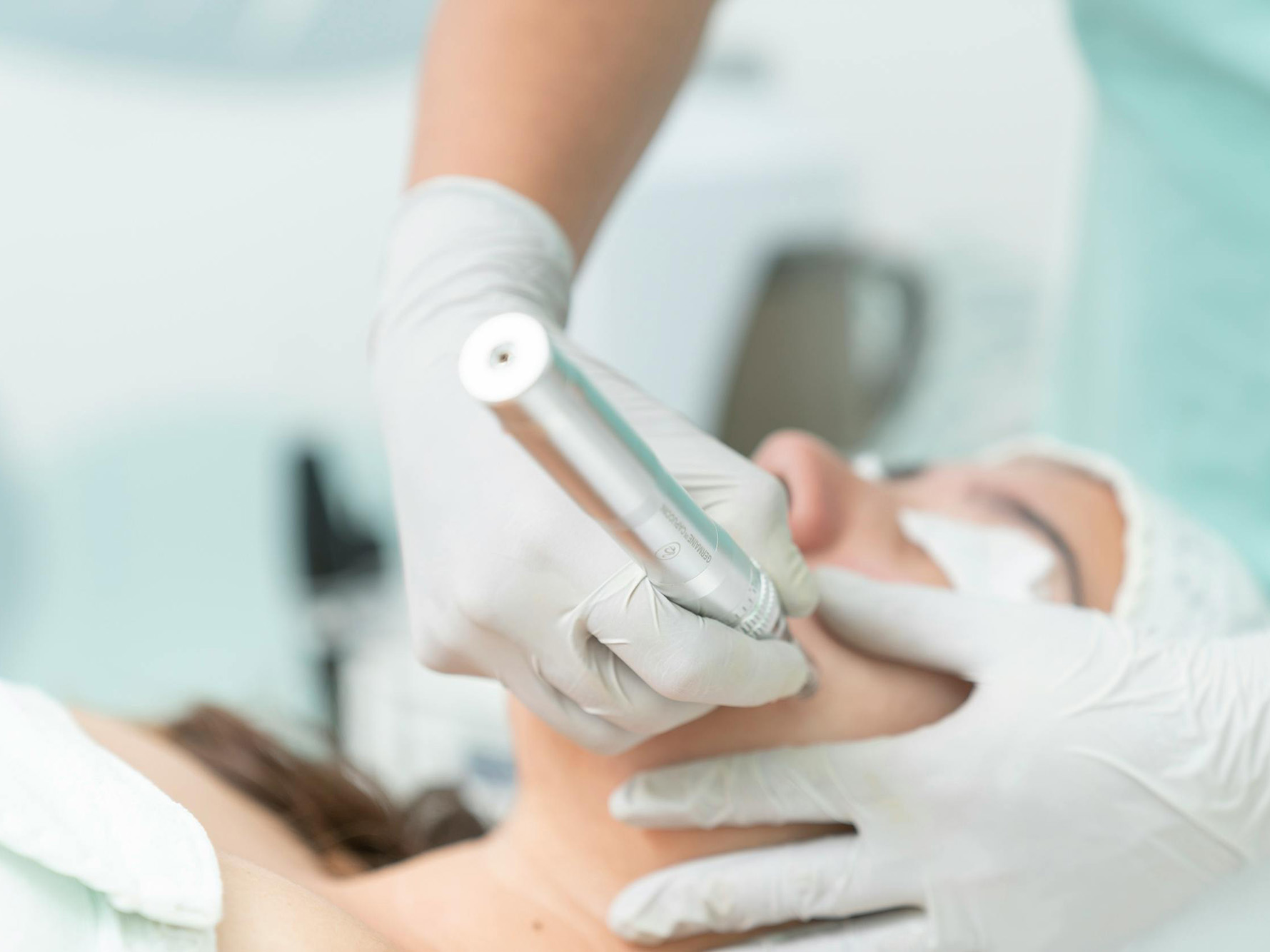FTM/N chest reconstruction surgery, also known as “top surgery,” is a solution for transgender men or non-binary transgender people who wish to achieve a more masculine looking appearance by reducing the size of or removing their breasts.
Your final chest appearance will be highly dependent on the surgical technique that you and your surgeon choose during your consultation. Ultimately, the best procedure for you will depend on your body type, cosmetic goals, and personal preferences. Your surgeon will discuss options to best suit you but read on to find out more about the techniques for chest construction surgery and how these compare to one another.
Liposuction
This type of procedure is ideal for very small chests, or in combination with other techniques. Liposuction requires only a very small incision that can often be concealed near the armpits. Incisions are usually about 4mm in length and result in minimal scarring.
Keyhole Method
The FTM/N Top Surgery Keyhole Method is a procedure for chest reconstruction that involves a small incision along the areolar border, through which the breast tissue is carefully removed by the surgeon. Despite its many benefits, only about 5% of the population are good candidates for this procedure because it requires the patient to have minimal breast tissue and tight chest skin.
This procedure is desirable because it involves very minimal scarring. The procedure creates a small scar up to 1/2 the length around the areola border. There is no excess skin removed at all in this procedure, and therefore it is only available to patients with minimal breast tissue and relatively tight chest skin.
About the Procedure
The surgeon first makes an incision alongside the areola and then dissects out across the most superficial surface of the breast tissue, leaving behind a uniform layer of thickness of fat beneath the skin that matches the thickness of the surrounding chest. Then the surgeon goes underneath the breast tissue and removes the breast material as a specimen. All breast tissue is sent off to a pathologist to check for cancer though it’s extremely rare to find any cancer in this tissue. Once the breast tissue is removed, the surgeon might perform final refining steps such as liposuction along the borders of the tissue excision to provide a smooth and uniform result. Often, the surgeon places a drain and then closes the incision. The drain is usually in place for about seven days after surgery and is then removed.
Healing and Sensation
After the procedure, the patient may experience significant numbness of the chest. Sensation usually returns with time, often ultimately feeling the same as before surgery. With all of the benefits of the keyhole procedure, it is not surprising that the few individuals who have anatomy favorable for this procedure consider it strongly. Unfortunately, it is less than 5% of patients that are candidates for a keyhole surgery because of their very small amount of breast tissue.
Periareolar Surgery Technique
The Periareolar procedure lies at a crossroads between Keyhole surgery and other surgeries that may require more skin removal. This procedure is a good fit for patients who have more skin than would be appropriate for the Keyhole surgery, but wish to have a procedure involving relatively minimal skin incision. It is a good fit for patients with minimal excess skin. However, all things considered, this is one of the procedures that has a higher revision rate because of the challenges involved, so one has to keep that in mind when choosing this procedure.
While periareolar surgery has many advantages, it can only be used if the patient requires minimal excess skin removal. Using the Periareolar technique on a patient with excess skin can result in a loose fold of skin in the lower chest or a pronounced pleating or sunburst pattern of wrinkling around the areola that does not go away. We can never be 100% sure of how skin is going to react to any procedure, but there are parameters which can help you and your surgeon determine which procedure is the right one for you.
Other names for the Periareolar procedure are Circumareolar and Donut Incision techniques. They all refer to the same thing, but Periareolar is most commonly used. Some people call the procedure a “peri” for short.
About the Procedure
The procedure involves a donut shape of skin removal around the areola. This is performed by marking the areola down to a more masculine size (about 22 mm in diameter), and then marking an outer circle of skin to be excised. The outermost layer of the skin (the epidermis, plus a very superficial portion of the dermis) is removed. Then, through this layer of tissue, the surgeon makes an incision and then works beneath the layers of the skin to remove the breast tissue. After the breast tissue has been removed, the surgeon performs a stitch called a “purse string” stitch to bring the outer circle down to the diameter of the inner circle. Sometimes, this has the downside of creating a pleating affect, oftentimes called a sunburst or a ripple pattern around the area left because of the mismatch between a large circle and a small circle. Most of the time, these ripples diminish or disappear completely in the weeks and months that follow surgery. The result is a male appearing areola requiring only a single incision around the circle of the areola.
Challenges
This procedure depends on a relatively narrow margin of error with regards to the health of the layer of fat on the tissue that is left beneath the skin. Achieving a perfectly uniform thickness across the entire chest can be a challenge even for the most capable of surgeons. Therefore, it is not uncommon for there to be some very subtle undulations in the surface contour of the chest with this procedure. Although these minor irregularities can happen with any procedure, they are less common with the Double Incision procedure.
Healing and Sensation
While most patients have a considerable decrease in sensation immediately after surgery, the majority recover most or all sensation. This is one of the great advantages of this procedure.
Comparing the Paeriareola Technique and the Double Incision Technique
For some patients, chest tightness is extremely important. If that is the case, the Double Incision technique will likely produce better results than the Periareolar. While the Double Incision procedure does create a considerable horizontal scar, it is the most powerful procedure for achieving a uniformly tight and smooth chest appearance.
The Inverted T (Anchor) Incision
In an Inverted T procedure, the tissue that is attached to the nipple and areola keeps its blood supply and a very thin sheet of that tissue is maintained intact. This tissue, referred to as a pedicle, goes all the way down to the lowest part of the breast area and keeps blood supplied to the nipple and areola. While we hope nerves are also traveling within this pedicle, we won’t know until after the procedure is complete how much nipple sensation is conserved.
After the creation of the pedicle, the rest of the skin is folded around the pedicle and the excess is removed. What’s left over is the incision around the areola which comes from the areola down to the lower breast, and then a curved incision across the lower breast area. The Buttonhole procedure is similar in every way except that not as much skin is removed and therefore the small vertical incision can be omitted from the Buttonhole procedure.
Comparing the T Anchor Incision and the Double Incision Techniques
Using the Inverted T method means that the nipple and areola do not need to be placed as a free nipple graft as with Double Incision techniques. Because of this, the Inverted T may result in a better chance of maintaining pre-surgery levels of sensation in the nipples, though this outcome is not certain. Scarring is a downside because of the extra incision in the central breast area in the vertical region between the areola and the inferior incision. Another possible disadvantage is that the pedicle is left behind to keep the nipple and areola alive. This will contribute volume to the chest resulting in fullness or a mound. In addition, the lower curvature of the incision is not as customizable by the surgeon because it has to be located in the lower breast fold. The surgeon cannot customize the horizontal location of the areola as much as they can with the double incision approach.
If maintaining a high level of nipple sensitivity is your priority, you may want to consider the Inverted T or the Buttonhole approach. However, it’s important to remember that retention of sensation is not guaranteed.
If you want to maintain a chest that is as flat as possible, or it is important for you to have a completely customized placement of the nipple or the incision, then the traditional Double Incision technique is probably the procedure to choose.
Fishmouth Incision Surgery
The Fishmouth Incision Method is a procedure for chest masculinization. The Fishmouth technique removes unwanted breast tissue and results in a flat chest. Because the horizontal scars that radiate out from the areola create a non-anatomic layout of scars, this procedure is more commonly chosen by non-binary transgender individuals.
The Fishmouth procedure combines elements of other surgical procedures. In some ways it is like a Double Incision surgery and in other ways it is like the Inverted T or Buttonhole technique. However, it is unique in that the resulting scars are not in anatomic locations. After the Fishmouth technique is used the scars are around the areola and extend out horizontally inward and outward from the areola itself.
For patients who wish to have a male appearing chest with an incision that is in the lower border of the muscle, this is not the procedure for them. Our surgeons perform this procedure most often for patients who are gender nonconforming and therefore do not wish to have either a male or a female appearing chest.
Advantages
One of the advantages of the Fishmouth procedure technique is that, much like the Inverted T or Buttonhole, there is a better chance of maintaining increased sensation density of the nipple areola region. Another advantage is the enhanced ability to obtain a considerable degree of flatness and tightness to the chest that can be flatter than with the Inverted T approach.
So, in summary, if a non-anatomic scar is a desired or acceptable outcome for you then this might be a good procedure for you. However, if having an anatomic location for your incisions is important to you then this procedure is not a good match for your priorities.
Double Incision Surgery
The Double Incision technique is one of the most commonly performed procedures for FTM/N chest reconstruction, especially for individuals with larger chests or significant skin laxity. It is considered the most versatile and effective method for achieving a flat, masculine chest contour, particularly when excess breast tissue and sagging skin are present.
About this Procedure
In this procedure, two horizontal incisions are made across the lower chest, typically following the natural contour of the pectoral muscles. The surgeon removes the breast tissue and excess skin through these incisions. The nipples and areolae are removed and resized, then grafted back onto the chest in a more masculine position. This technique allows for complete control over nipple placement and chest contouring.
Because the nipple grafts are detached from their original blood and nerve supply, they are considered “free nipple grafts.” This means they are reattached as skin grafts, which can affect sensation and healing.
Healing and Sensation
Healing from Double Incision surgery typically involves a longer recovery period compared to minimal-incision techniques. Drains are often placed to prevent fluid buildup and are usually removed within a week post-surgery. Scarring is more prominent with this method, as the horizontal incisions are longer and more visible, but they tend to fade over time and can be treated with scar management techniques. Nipple sensation is usually reduced or lost initially due to the grafting process. While some patients regain partial sensation over time, full sensation is not guaranteed. Despite this, many patients choose the Double Incision method for its ability to produce a consistently flat and tight chest appearance.
Advantages
The double incision method is ideal for patients with larger chests or significant sagging, it allows for complete removal of excess skin and tissue and offers precise nipple placement and chest contouring. The Double Incision technique tends to have lower revision rates compared to more conservative techniques.
What To Consider For Your Journey
Choosing the right chest construction technique is a deeply personal decision, and there’s no one-size-fits-all approach. Each method—whether it’s Keyhole, Periareolar, Double Incision, Inverted T, Buttonhole, or Fishmouth—offers unique benefits and considerations depending on your anatomy, aesthetic goals, and priorities around healing, sensation, and scarring.
At Cosmedicare, we understand that top surgery is more than just a procedure—it’s a transformative step in aligning your body with your identity. Our team is here to guide you through every stage of the process, from consultation to recovery, with compassion, expertise, and respect for your individual journey.
If you’re considering chest masculinization or gender-affirming surgery, we encourage you to book a consultation to explore your options in detail. Together, we’ll find the approach that’s right for you.




